
I missed the first issue of FOUR STAR SPECTACULAR, which is a shame, as it reprinted among other things a redrawn Golden Age Flash story. But I was there for when the second issue arrived at my 7-11–and while a Kid Flash story was maybe not as compelling as one featuring Jay Garrick, it was enough to make me bring the issue home. It’s also worth noting that I think this was the first time I became aware of the UPC code on the front cover, a recent addition which here crams Wonder Woman awkwardly into a tiny space.
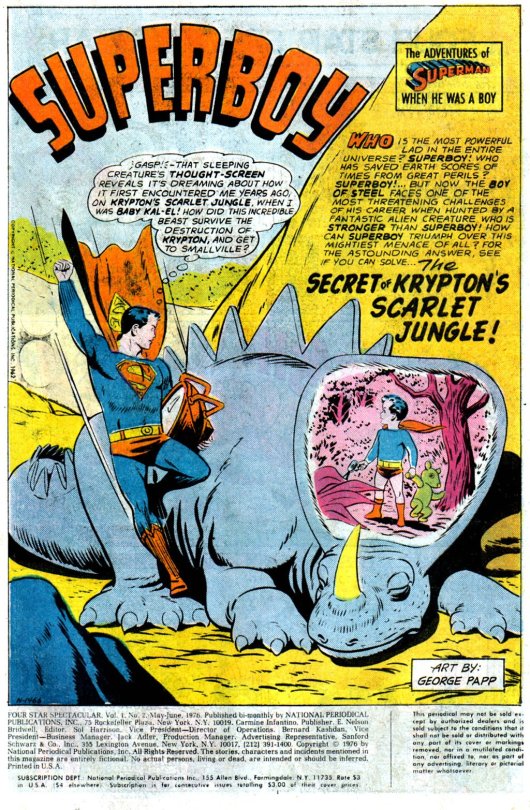
I loved all of DC’s oversized reprint comics, partly because I liked the value-for-money that I got in these tomes, but just as much because I really liked (and even preferred in many cases) the stories and creators of the past more than the ones of the present. It wouldn’t be too long until they became a thing of the past, sadly–and even in this issue, editor E. Nelson Bridwell’s text page tells of how this issue was originally supposed to include stories of Blackhawk and Green Lantern, but shrinking page counts forced him to discard those stories in favor of the Kid Flash/Elongated Man story (thus still maintaining “four stars”, as the tile boasted.)
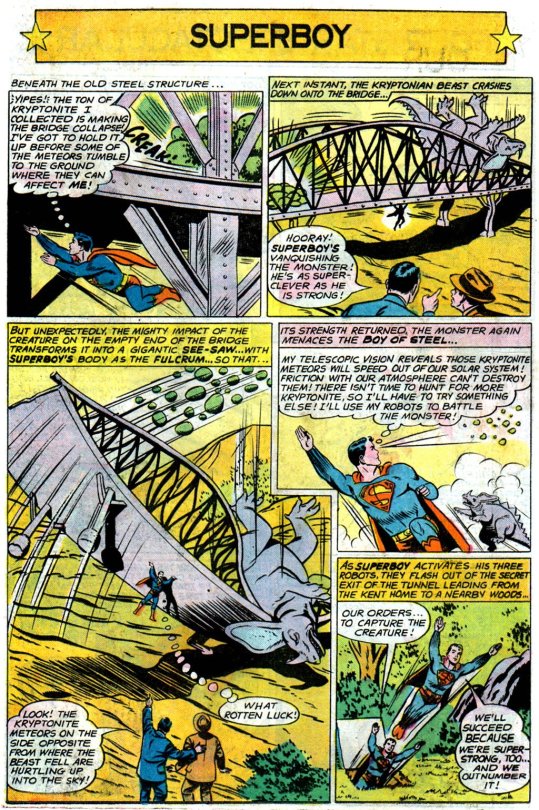
The issue opens with a Superboy story in which a Kryptoninan Thought-Beast, whose forehead-screen reveals its thoughts as images, escaped from an interplanetary zoo and made its way to Earth. Even Superboy’s powers are no match for the beats, and one by one, his assorted efforts to rid the planet of it using Kryptonite, his robots and the Phantom Zone Projector all come to nothing. Eventually, though, by wearing a head-screen of his own, Superboy is able to lure the beast to a far-off world that hes refashioned in the image of its native habitat, the Scarlet Jungle on Krypton. And the day is saved!
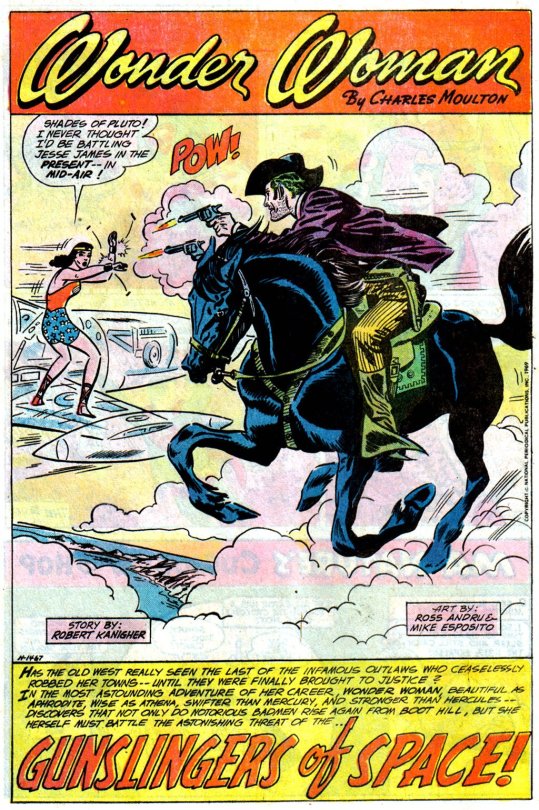
Following that was another bananas Wonder Woman story written by Robert Kanigher, and drawn by Ross Andru and Mike Esposito, the team responsible for updating the amazing Amazon’s look in the late 1950s. Bananas is really the only way to describe Kanigher’s approach to these stories, many of which were almost certainly typed out stream-of-consciousness style and lurch from event to event with little rhyme or reason. They’re an acquired taste, but one that can be very entertaining if you’re in the correct frame of mind.
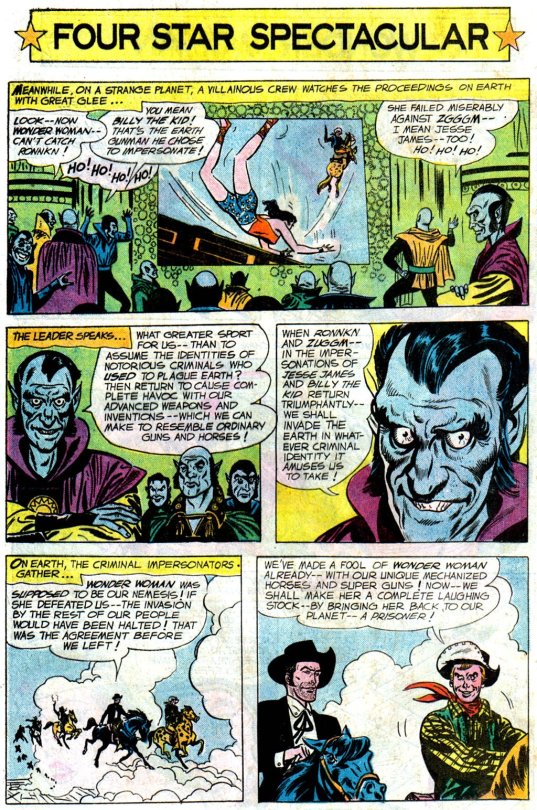
When air force planes and passenger trains are attacked by cowboys straight out of the old west on flying steeds, Wonder Woman rockets to the attack. But the old school owlhoots are always one step ahead of her. This is because they’re not cowboys at all, but rather alien beings who’ve disguised themselves as cowboys–pretty much for the hell of it (and, presumably, because Kanigher thought it would make for a good cover.) Eventually, Wonder Woman creates a giant magnet which attracts all of the marauders, and she returns them in defeat to their homeworld. All of which sounds a bit more sensible than it actually is on the page, by the way.
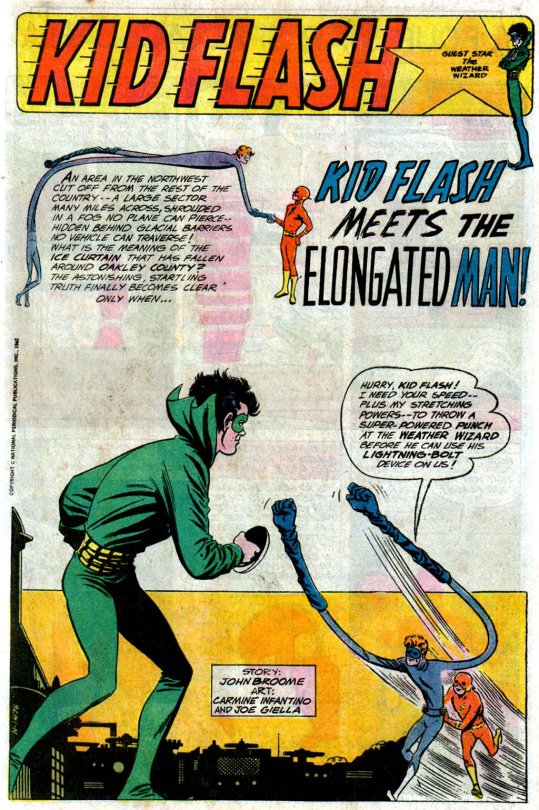
Then, the main event for me was the story in which Kid Flash teamed up with the Elongated Man to combat the Flash’s old foe the Weather Wizard while the Scarlet Speedster was occupied with other adventures (in this case, a team-up with Green Lantern that I had read previously in FLASH #232). This story featured the slick art of Carmine Infantino that I loved, with its roughest edges expertly polished off by inker Joe Giella. I know that many feel that Giella took too many liberties with Carmine’s work, including Carmine himself. But for me, it’s the look that defines the Flash, and I like it.
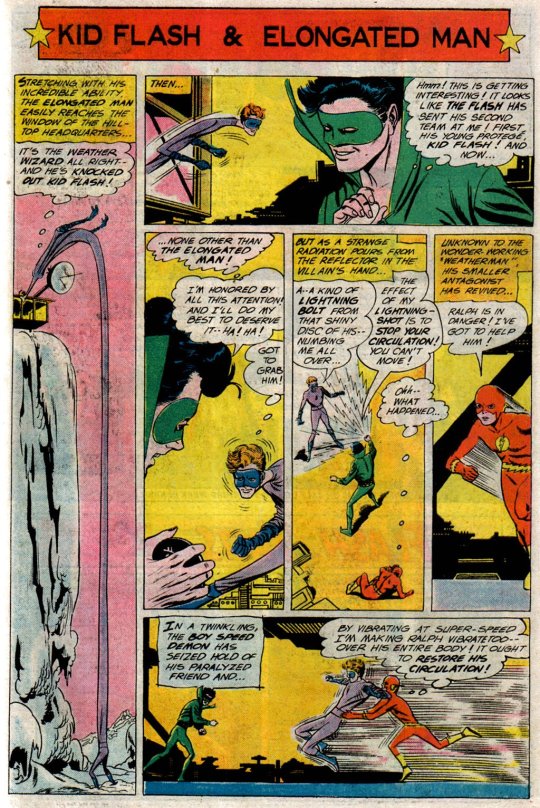
In particular, Infantino had an appealing way of depicting the Elongated Man’s ductility. It wasn’t as zany as Jack Cole’s Plastic Man, nor as straight-faced as Jack Kirby’s Mister Fantastic. But it was always effective. In particular, Infantino was great at showing the Elongated Man’s entire figure, no matter what contortions he was being put through. That made his ability somehow more plausible, while still keeping the approach light and airy enough for the comedy of the character to come through.
